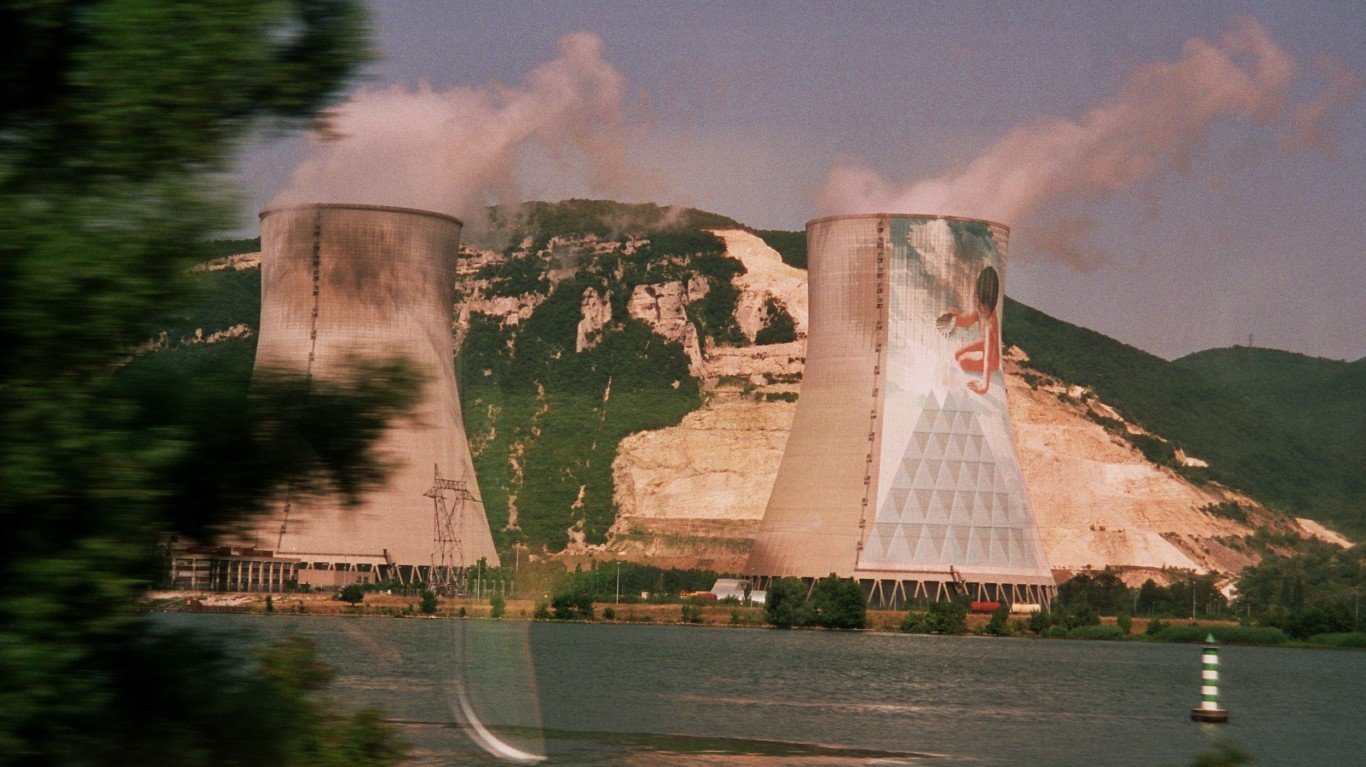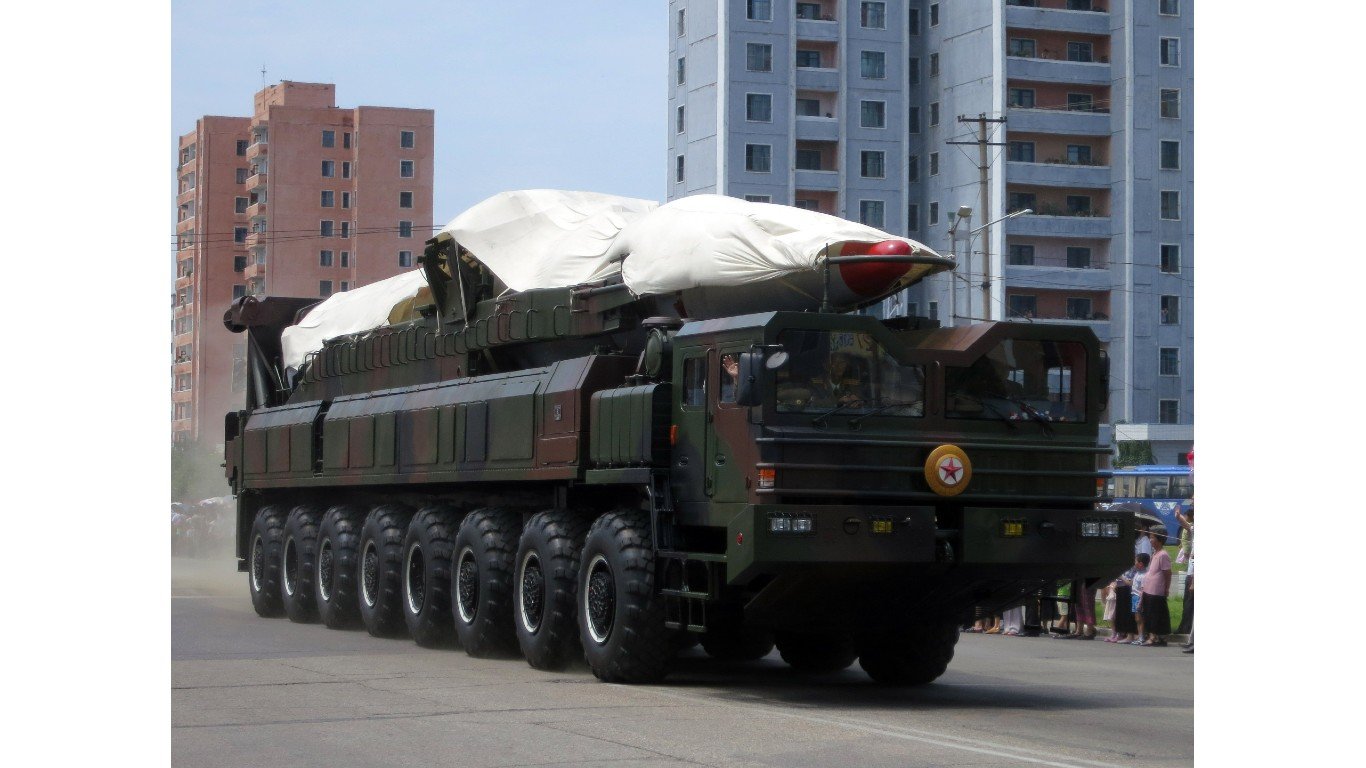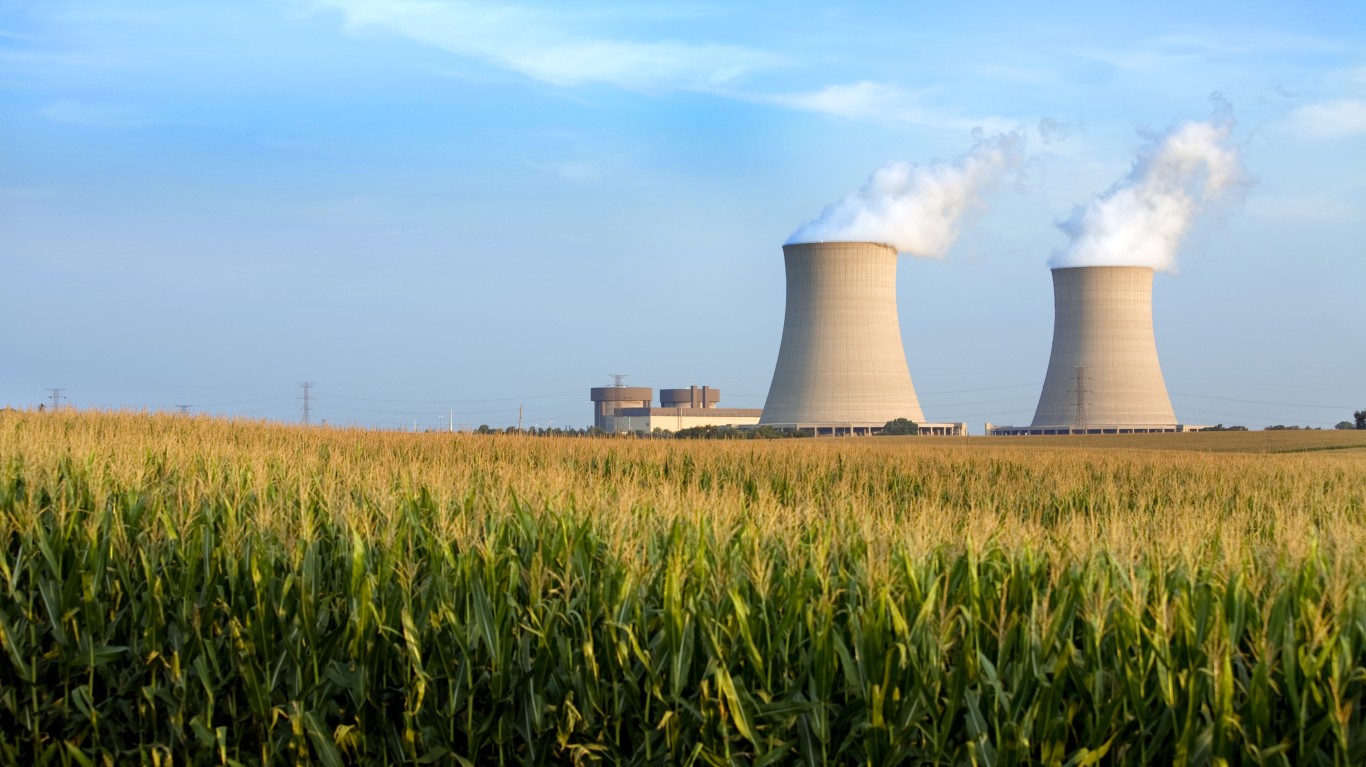

The world first entered the nuclear age in the early 1940s, when a group of scientists, led by Italian physicist Enrico Fermi tested the first nuclear reactor. Since then, nuclear power has been used in a variety of ways, from the Atomic Age in the mid-1940s for weaponry to today, where heat generated by controlled nuclear processes has been harnessed to power turbines that create electrical power. Currently, dozens of countries rely on nuclear power as a source of sustainable energy. Radiological materials have also been used in medicine, for diagnosis and treatment of diseases. Other industries have been using radiological isotopes as well.
Although it may seem that nuclear power has many positive outcomes, there is a downside. Irradiated materials like Iodine-131, cesium-137, and cobalt-60, are incredibly dangerous. Unlike the fantasy worlds of superheroes, radiation exposure does not turn people into Spider-Man, the Hulk, or the Fantastic Four but rather has significant ill effects, from burns and radiation sickness to several types of cancer and cardiovascular disease. A person with acute radiation syndrome can die within weeks or months. Radiation that escapes into the environment, as it did at the Chernobyl nuclear plant accident in April 1986, is harmful thousands of years into the future.
Additionally, toxic waste generated by spent nuclear fuel requires long-term storage and management. Though advances have been made in recycling and maximizing the use of radioactive fuel rods, the United States alone generates about 2,000 metric tons of spent nuclear fuel annually that has to go somewhere. But no one wants this waste contained near their homes, which makes finding places to store nuclear waste challenging. (See if the U.S. is also the country with the most nuclear weapons.)
The first nuclear power station began in 1954 in the former Soviet Union (now Russia) with the opening of the Obninsk Nuclear Power Plant in Obninsk. The United Kingdom followed a few years later with the Calder Hall, and then the United States with the Shippingport Atomic Power Station. The number of countries with nuclear power plants has only increased. with 32 countries currently using nuclear power plants. Belarus and the United Arab Emirates are the most recent members of this global nuclear power club. These countries have agreed to track incidents at their nuclear plants and in other industries that use radiological materials, from medical imaging to materials testing (i.e. industrial radiography).
24/7 Wall St. reviewed Amsterdam-based LAKA (LAndelijk Kernenergie Archief – National Nuclear Energy Archive) archives, which list all nuclear and radiology-related mishaps since 1990 as reported each year by the International Atomic Energy Agency to find how many radiological incidents and mishaps happened in countries with nuclear power reactors. We’ve listed ten countries that have the most incidents. From the IAEA’s Power Reactor Information System database, last updated on Dec. 11, 2022, we added the number of nuclear reactors in each country.
Countries leading the pack with nuclear incidents are the United States, France, and India. These countries have reported at least 921 nuclear and radiological mishaps over the past 32 years. Most of these incidents rank low on the seven-level rating system of the International Nuclear Event Scale, or INES, which ranks such mishaps based on numerous factors, including whether the incident overexposed workers or members of the public; and whether or not the radiological spill was contained within a facility; and whether the incident signified a breach of adequate safety protocol.
There is a seven-level grading system used by INES to determine safety threat levels – level 0 has no safety significance, 1 is considered an anomaly, while levels 2 and 3 are considered incidents. Levels 4 and above are categorized as accidents. Chernobyl and Fukushima were both level 7 major accidents. Radioactive leaks are measured by the number of curies, a unit of radioactivity named after the Polish-French nuclear pioneer Marie Curie. (These two events are the world’s worst nuclear accidents.)
Here are countries with major nuclear power disasters
Canada
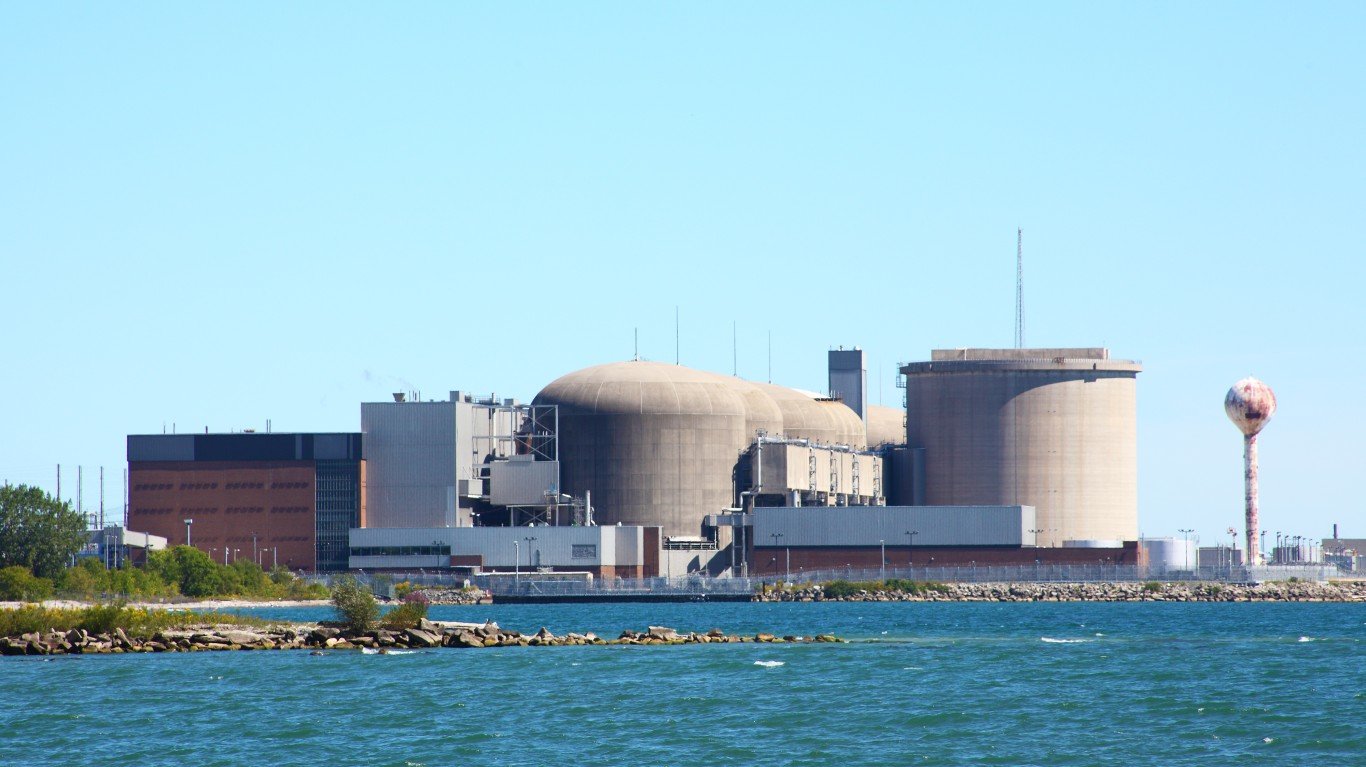
- No. of nuclear reactors, Nov 2022: 19
- Pct. of country energy supplied by nuclear, 2021: 14.3%
- No. of nuclear and radiology-related incidents since 1990: 22
Canada has not had a nuclear-related incident above level 2 on the International Nuclear Event Scale since 1990. Five of these 22 reports are “below scale,” meaning they were rated zero on the INES, including two reports following earthquakes that occurred in 2010 and 2013. Canada’s two worst nuclear plant accidents occurred in the 1950s, both at a plant in Chalk River, Ontario. The first in 1952 released radioactivity into the local environment, and the second event occurred six years later when a radiation leak at the facility had to be contained.
China
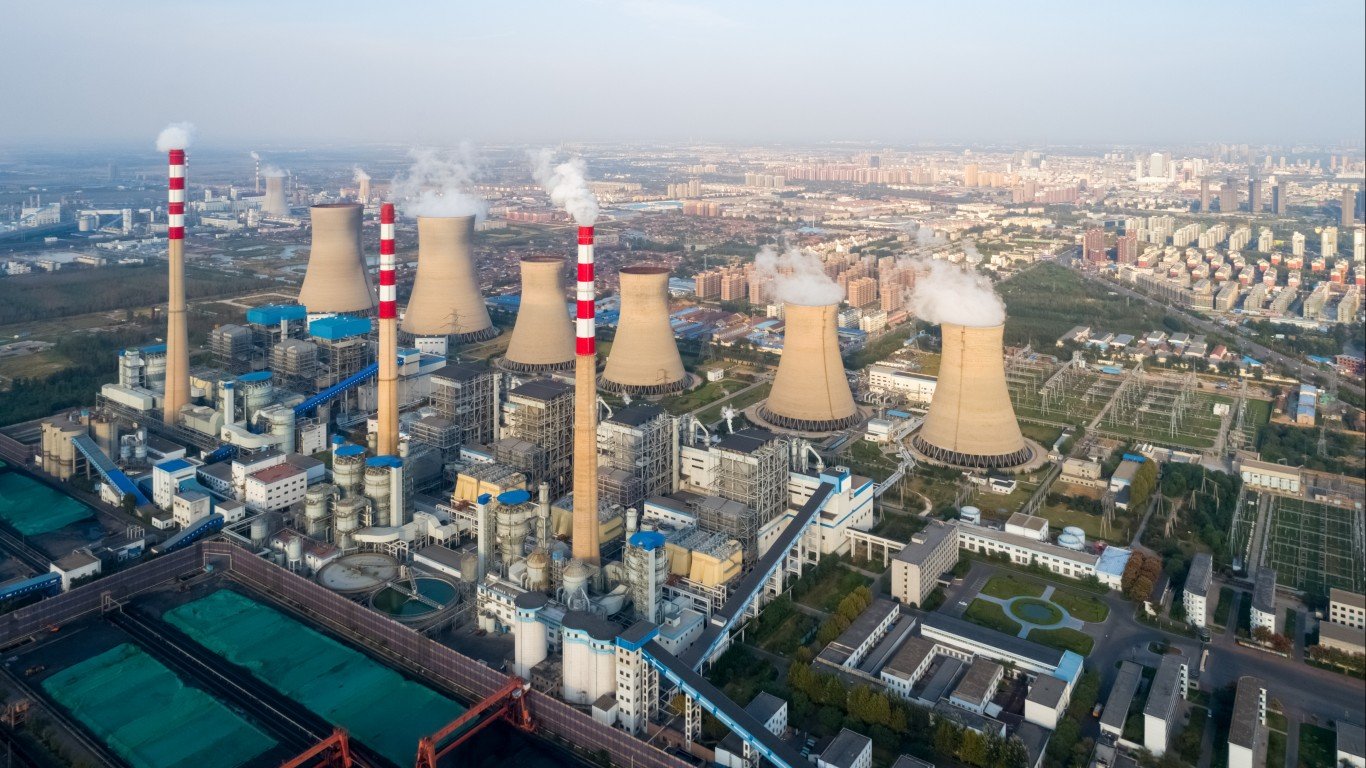
- No. of nuclear reactors, Nov 2022: 55 (includes 3 reactors in Taiwan)
- Pct. of country energy supplied by nuclear, 2021: 5.0%
- No. of nuclear and radiology-related incidents since 1990: 8
China has reported eight nuclear and radiological-related incidents since 1990, including three that reached level 3 on the INES. The first of these occurred in January 1992 when a lost piece of cobalt-60 in Shanxi province was found by a man who later died along with his brother and father from acute radiation poisoning. The second level 3 event took place at an electrical wire factory in Tianjin, when two workers were injured by exposure to a high frequency, high voltage electron accelerator. The third event, in 1996, injured a worker at a polyethylene project in Jihua after he was accidentally exposed to iridium-192.
France
- No. of nuclear reactors, Nov 2022: 56
- Pct. of country energy supplied by nuclear, 2021: 69.0%
- No. of nuclear and radiology-related incidents since 1990: 107
After the United States and China, France ranks third in the world in nuclear power electric production. Relative to its population and geographic size, France is the most nuclear power-dependent country in the world and it ranks second on this list, after the United States, in the number of reported nuclear and radiological-related incidents. Though none of these events led to radiological leaks, two incidents injured or killed reactor workers. One incident, in September 2011, was a furnace blast at the Marcoule Nuclear Site. On the other, in November 1992, three workers entered an active nuclear particle accelerator without protective gear in Forbach.
India
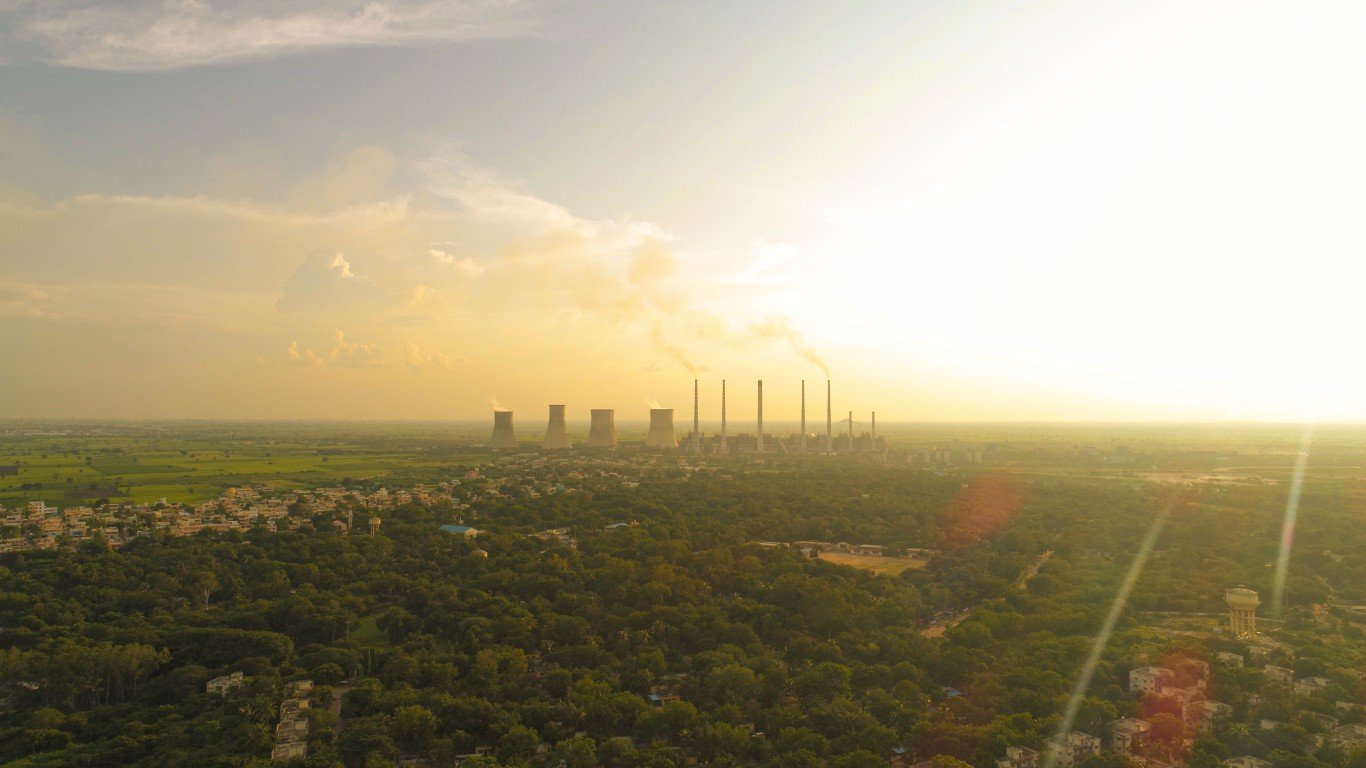
- No. of nuclear reactors, Nov 2022: 22 (+1 suspended reactor)
- Pct. of country energy supplied by nuclear, 2021: 3.2%
- No. of nuclear and radiology-related incidents since 1990: 98
India ranks third in the number of reported nuclear and radiological-related incidents since 1990, after the United States and France, despite having significantly fewer nuclear power reactors. All but two events have ranked lower than INES level 3, but one of them measured level 4.
In that event, on April 7, 2010, a scrap metal dealer came to a hospital with radiation-induced symptoms. Upon investigation, it was discovered that the source of the radiation was discarded gamma cells (used for several industrial and medical purposes) containing cobalt-60 at three scrap metal shops in the Mayapuri district of West Delhi, requiring an extensive cleanup operation. A level 3 event occurred in 1993 when a turbine fire at a nuclear power plant in Narora, Uttar Pradesh state, set off an emergency cooling system that prevented a meltdown.
Japan
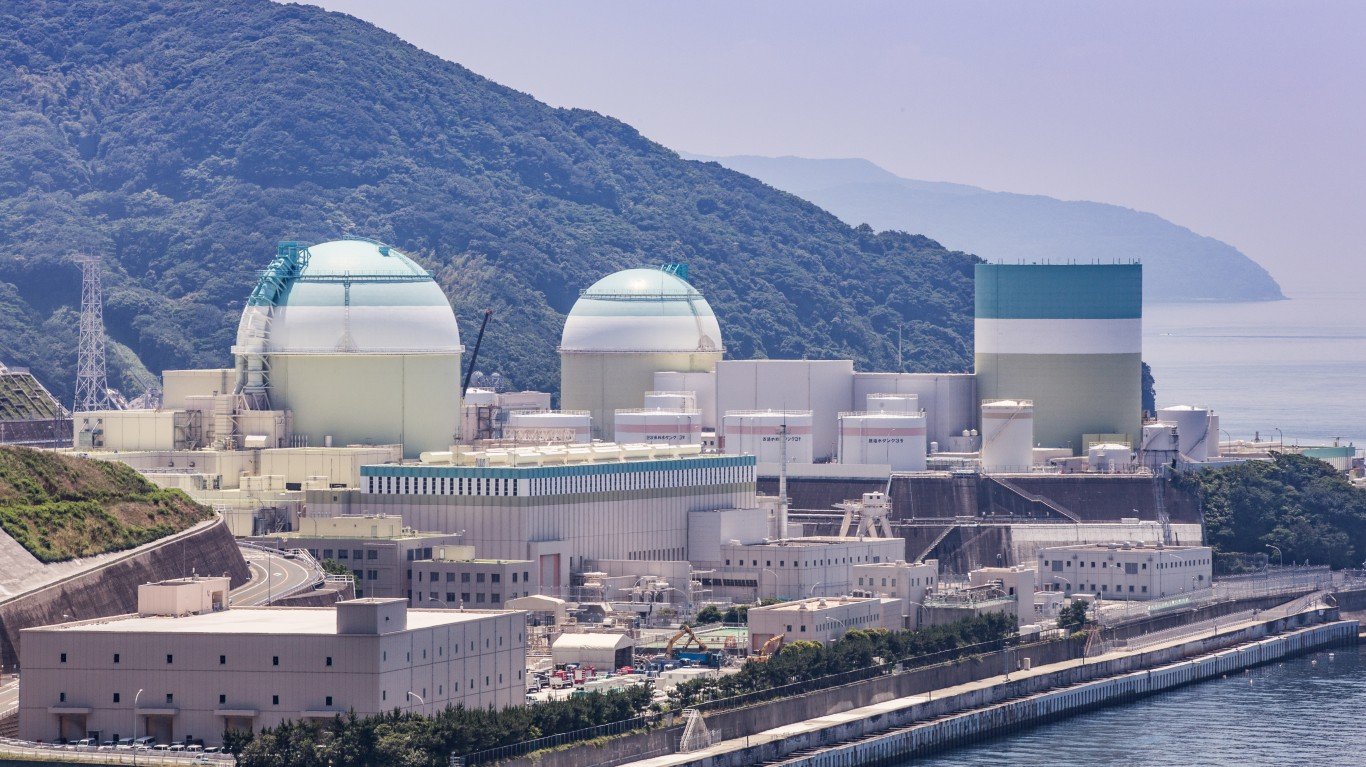
- No. of nuclear reactors, Nov 2022: 17 (+16 suspended reactor)
- Pct. of country energy supplied by nuclear, 2021: 7.2%
- No. of nuclear and radiology-related incidents since 1990: 45
Japan’s Fukushima nuclear accident of March 2011, instigated by the Tōhoku earthquake and tsunami, is the largest nuclear disaster since the April 1986 Chernobyl accident in Soviet Ukraine. Both accidents reached INES level 7, the highest possible rating.
The Fukushima accident led to numerous other incidents over the following years involving the management and control of contaminated water. The death toll from the Fukushima accident (both from direct exposure and ensuing health risks) was much lower than Chernobyl’s. The reason for this has been attributed to improved reactor design and safety protocol and Japan’s early response that involved the immediate evacuation of 160,000 people.
Korea, Republic Of
- No. of nuclear reactors, Nov 2022: 25
- Pct. of country energy supplied by nuclear, 2021: 28.0%
- No. of nuclear and radiology-related incidents since 1990: 52
Forty-five of South Korea’s 52 nuclear and radiation-related incidents since 1990 registered a zero on the International Nuclear and Radiological Event Scale, meaning the incidents had no safety significance. Out of the seven incidents that had safety significance, only one rose to level 3, meaning at least one worker was exposed to a non-lethal injury (i.e. radiation burns) from a leak contained to the facility, and the leak may have had the potential to be a more dangerous incident.
That mishap occurred in March 2009 when a radiography worker at a pipe-welding workshop in the southern city of Jinju was exposed to enough iridium-192 to be injured by severe burns on his fingers from an excess full-body dose of radiation.
Russian Federation
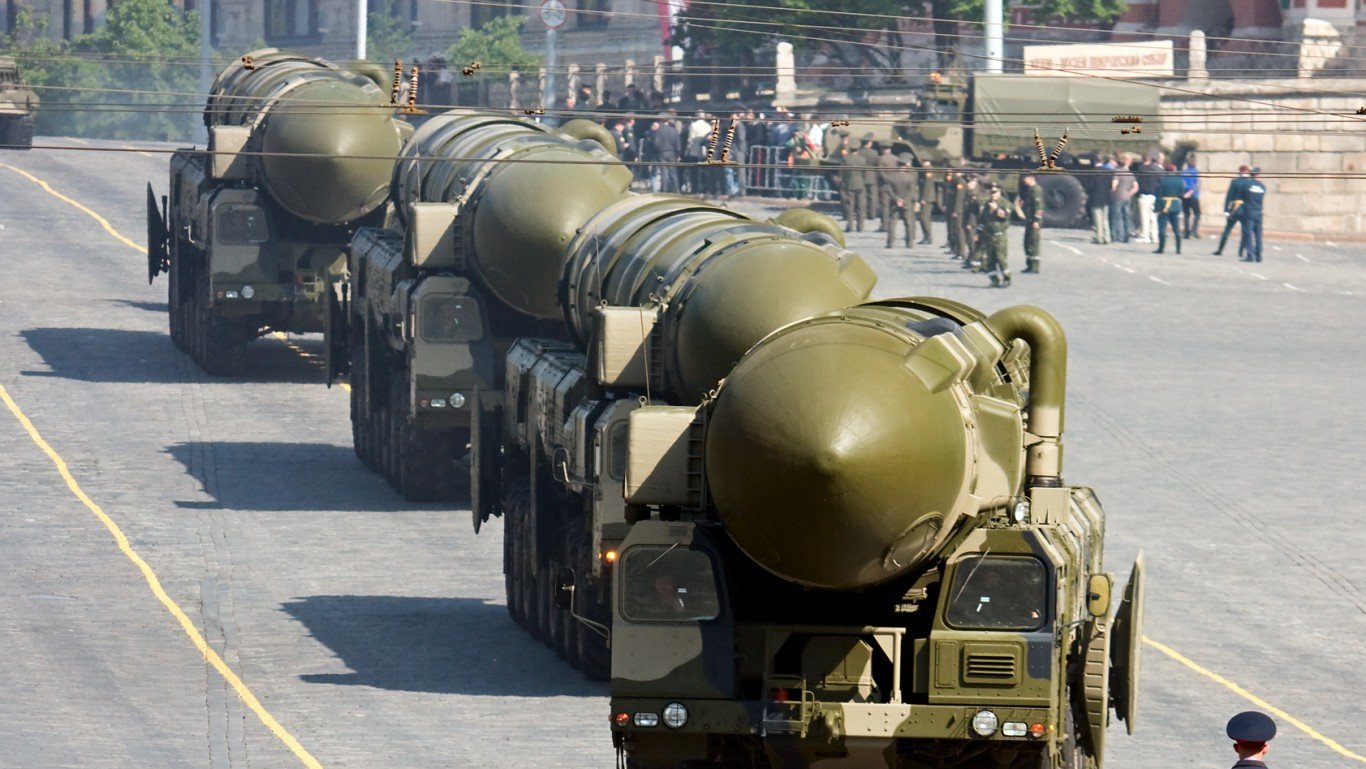
- No. of nuclear reactors, Nov 2022: 37
- Pct. of country energy supplied by nuclear, 2021: 20.0%
- No. of nuclear and radiology-related incidents since 1990: 38
Since 1990, Russia has reported four nuclear and radiation-related incidents that measured INES level 3. Two of them occurred on Feb. 2, 1993, when a tornado damaged transmission lines that triggered an emergency protection system at two of the four reactors at the Kola Nuclear Power Plant near the northwestern town of Polyarnye Zori, 765 miles north of St. Petersburg. The higher INES rating was earned in part due to deficiencies in safety protocols.
Two other level 3 events occurred. One at the nuclear plant in eastern Siberia near the town in Bilibino on July 10, 1991, and the other at a plant about 60 miles from the western city of Smolensk just days later, on July 22, 1991.
Ukraine
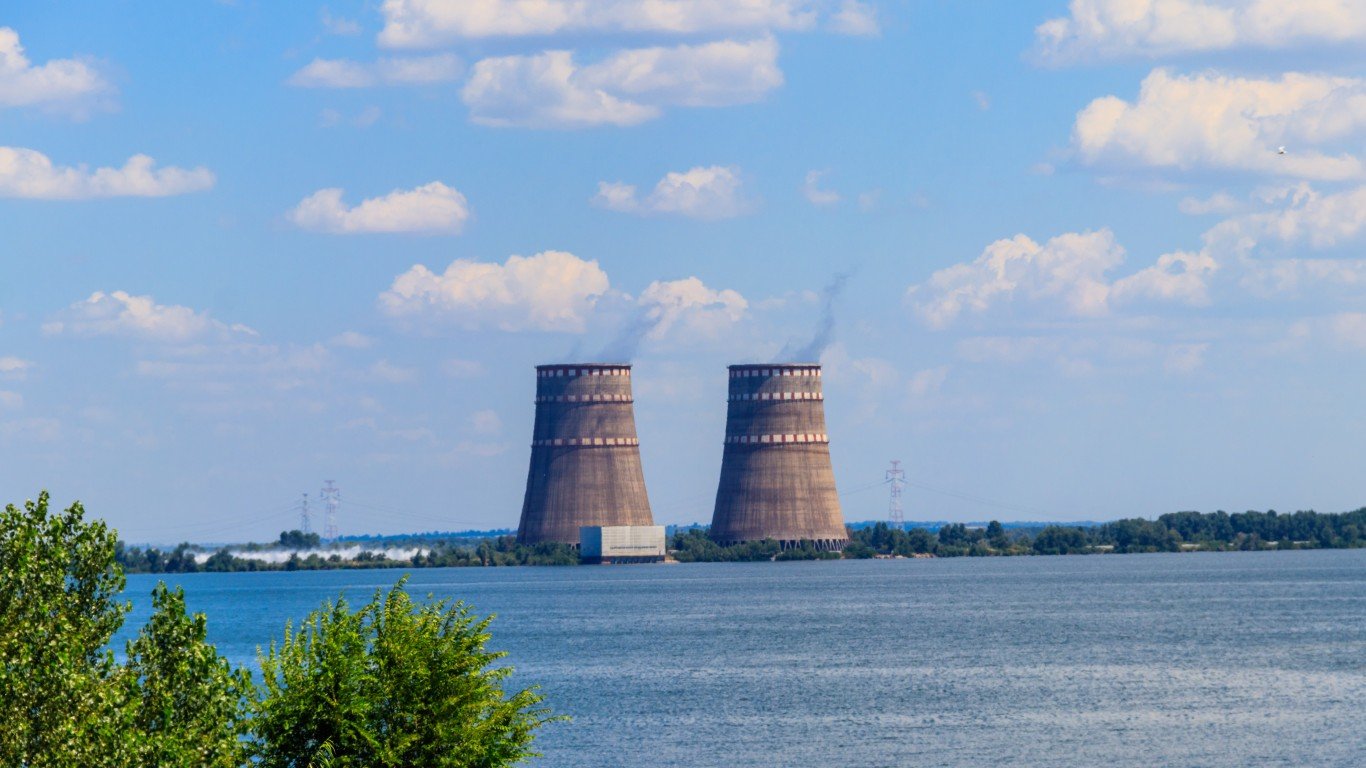
- No. of nuclear reactors, Nov 2022: 15
- Pct. of country energy supplied by nuclear, 2021: 55.0%
- No. of nuclear and radiology-related incidents since 1990: 48
The Chernobyl Nuclear Power Plant continued operations until December 2000, nearly 14 years after April 26, 1986, when the meltdown of one of its reactors caused the worst nuclear accident on record, an accident that made the vicinity radioactive for the next 20,000 years. Between 1990 and the plant’s permanent shutdown, Ukraine reported 18 other incidents at the plant, including two that measured level 3 on the INES. in April 1991 and November 1995.
One other INES level 3 event occurred at a nuclear plant in western Ukraine in February 1991. Russian President Vladimir Putin recently announced the appropriation of Ukraine’s Zaporizhzhia nuclear power plant, the largest in Europe, a move that Ukraine calls “null and void.”
United Kingdom
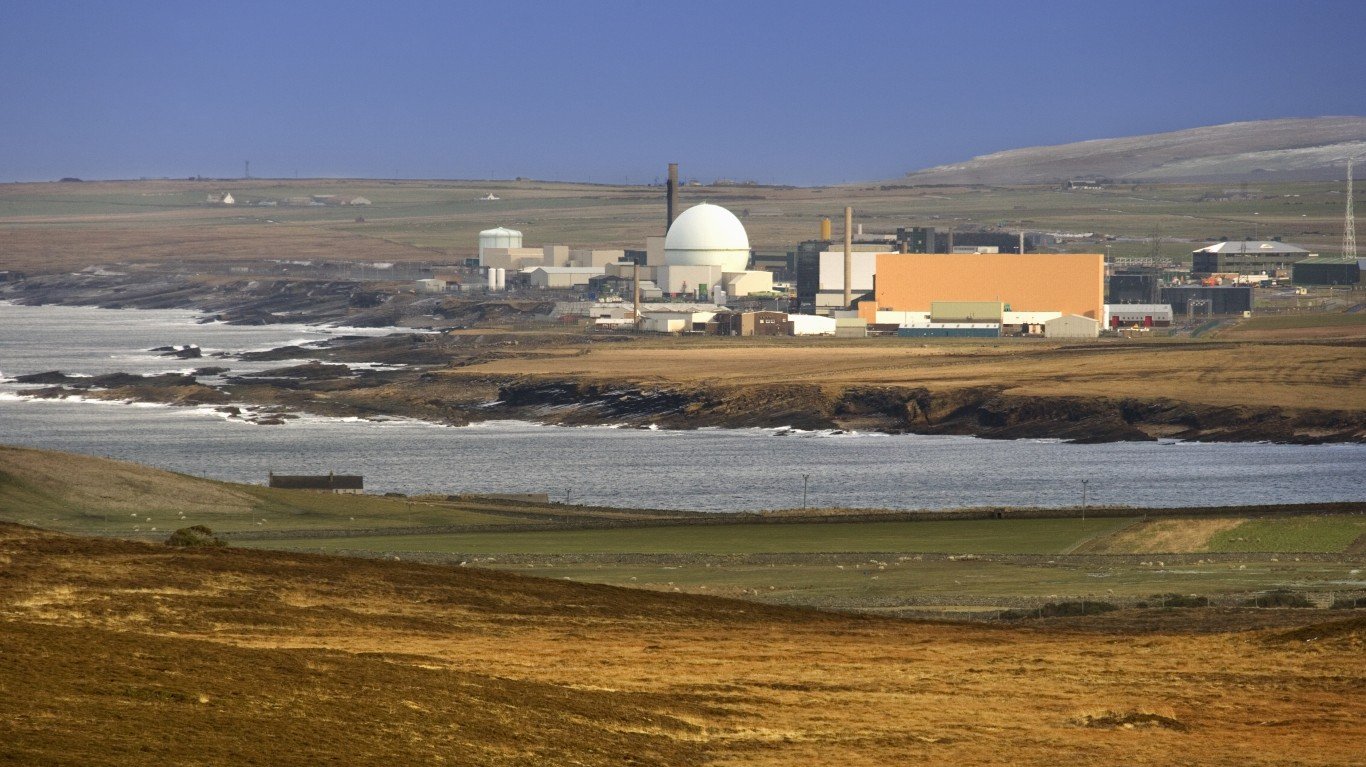
- No. of nuclear reactors, Nov 2022: 9
- Pct. of country energy supplied by nuclear, 2021: 14.8%
- No. of nuclear and radiology-related incidents since 1990: 45
The United Kingdom has used nuclear power since the 1950s. Most of its reported nuclear and radiological-related incidents since 1990 involve nuclear power facilities, notably the Sellafield multi-function nuclear site on the coast of Cumbria in northwestern England. In 1957, the Windcastle Fire at Sellafield was an INES level 6 accident.
All but two of the incidents since 1990 measured below INES level 3. The first of the two-level 3 events occurred at Sellafield in September 1992, when plutonium nitrate leaked from a corroded pipe into a containment cell while safety devices failed to detect further leakage out of the cell. The second level 3 incident took place in April 2005, when a fractured pipe at a reprocessing plant at Sellafield leaked uranium and plutonium dissolved in nitric acid.
United States of America

- No. of nuclear reactors, Nov 2022: 92
- Pct. of country energy supplied by nuclear, 2021: 19.6%
- No. of nuclear and radiology-related incidents since 1990: 137
Having the world’s largest nuclear power plant industry and a large number of industries that use irradiated materials, it should be no surprise that the United States reported the most nuclear and radiological-related incidents since 1990. France is the only other country with more than 100 of these events during that time.
Though there were several INES level 4 accidents in the U.S. before 1990, including INES level 5 at Three Mile Island in 1979, all but three of the events since 1990 rated below INES level 3. The three-level 3 events included a March 2002 incident at the Davis-Besse Nuclear Power Station in Oak Harbor, Ohio, when an inspector discovered a severely eroded reactor component that could have caused a more serious incident.
Sponsored: Attention Savvy Investors: Speak to 3 Financial Experts – FREE
Ever wanted an extra set of eyes on an investment you’re considering? Now you can speak with up to 3 financial experts in your area for FREE. By simply
clicking here you can begin to match with financial professionals who can help guide you through the financial decisions you’re making. And the best part? The first conversation with them is free.
Click here to match with up to 3 financial pros who would be excited to help you make financial decisions.
Thank you for reading! Have some feedback for us?
Contact the 24/7 Wall St. editorial team.
